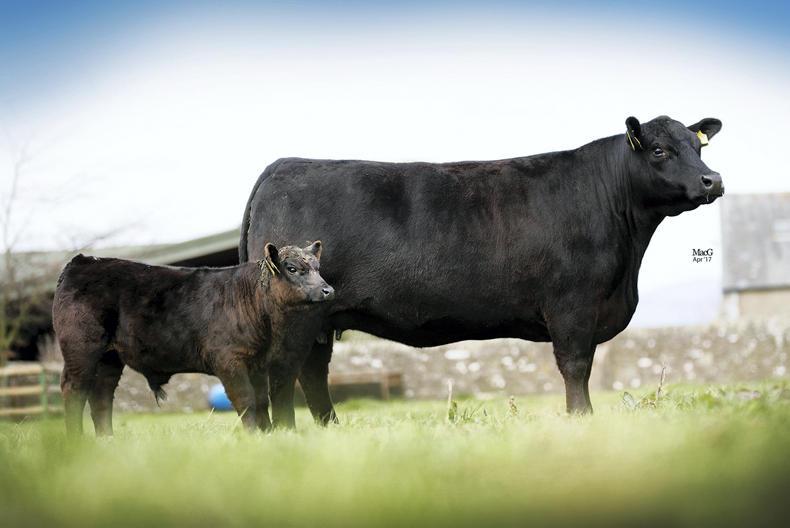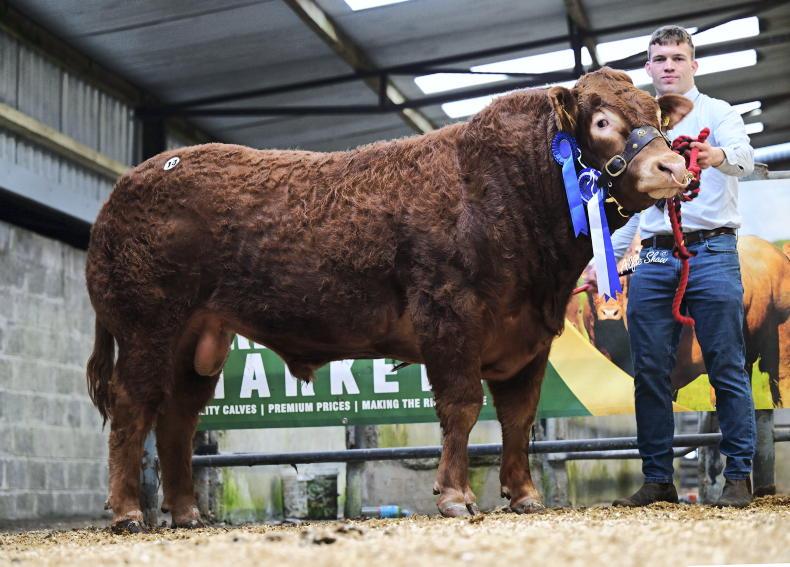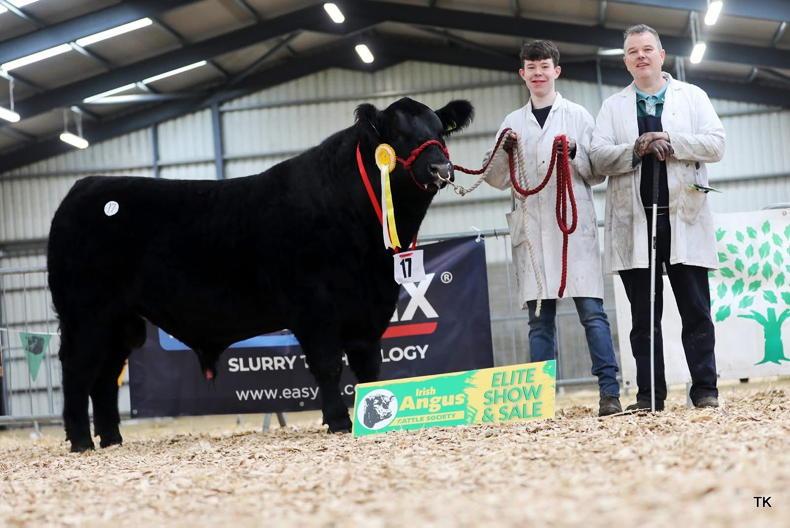The Dunlouise Angus herd is synonymous with breeding true Angus, not just locally but worldwide. What is it though that makes this herd, above all others worldwide, so famous? The answer is that it uses only pure native Angus bloodlines.
The Soutar family of Geordie, Julia and children Duncan and Louise have found a particular niche in the market by reviving true Angus genetics from the mid-1900s.
While this adds its own difficulties, from sourcing foundation females to reduced semen straw quality due to the time it was collected, the Soutars have invested time and money to make the system work.
Farming in the heartland of Angus County, where the breed first originated, the Soutar family started breeding the natives when population numbers worldwide stood at less than 150 females, critical point on the endangered list.

Louise, Julia, Duncan and Geordie Soutar.
While the attitudes of fellow breeders when the family started back in 1995 mostly surrounded the viability of the system, these mindsets have all changed given the success of the herd on the international platform.
The herd has achieved remarkable success worldwide through the sales of embryos and semen. In fact, Dunlouise Jipsey Earl is internationally the most successful UK-bred bull ever and is a Pathfinder sire in America, the only UK bull ever awarded this status.
This year will mark the pinnacle of the family’s success when Dunlouise will host the first native sale in the UK in over 50 years.
The origins
But where did it all start?
Geordie Soutar tells of what drove them down the path of pure native breeding.
“We had commercial cattle before I bought two Aberdeen Angus in 1995, one of them was a native the other wasn’t. The more I worked with the native the more I thought that’s the way Angus cattle should be. It took off from there really.
“Following this, I got a list of all the animals which had no imported bloodlines in them from the past secretary of the Aberdeen Angus Society, Bob Anderson.
"Most of these were old cows and most of them were in-calf to non-native bulls because most people saw no merit in keeping native native.”
From here, Geordie and Julia set about tracking down these cattle and have since established nine female lines within the herd all dating back to 1850, to the first Aberdeen Angus herd book.
And through selective breeding, and trial and error with AI bulls through the years, the herd has broadened these bloodlines, expanding the native gene pool in the process.
There’s a lot of good old genetics.
"They could’ve done a lot more from within the breed at the time. There would’ve been a lot of good genetics lost by chucking in a big Canadian bull or whatever.
"They did make them too little, but then they made them too big and too hard as well, whereas these ones we’ve got haven’t been anywhere except in the middle.
“We try by seeing what works, but of course some have fallen by the wayside if they didn’t take us forward. We’re not going forward with numbers – we’re going forward with basically what we see on the ground.
“We’re trying to improve them, all the time we’re trying to improve. It doesn’t always work, but give 20,000gns for a bull in Stirling it doesn’t always work either. It’s not a fast job.
“We look at the feet, the legs the head; we don’t want explosive growth. The minute you go after explosive growth is the minute you have to increase your inputs. It’s all about this minimal input and the cattle that can work for me. I look after my cattle don’t get me wrong, but I’m not going to be a slave to them. They’re there to work for us,” explains Geordie.
The average carcase weight of the natives comes in between 290kg to 320kg and while some people are fast to criticise the size of the natives compared with modern-day cattle, Geordie explains there are other big advantages of the breed.
“Everybody wants size at a young age but I think if they see these bulls at two and half they’ll have every bit of size that anybody needs in this day and age. But everybody wants instant gratification. They want it now. That’s the thing," he said.
The Americans saw a value in the natives far sooner than most.
"Marbling is a big thing in the States. See if they don’t have marbling then they’re no good. They saw a lot of merit in the natives, because you can marble them off the grass.
"People say you can’t marble cattle unless you’re giving them grain; that is not true. Certain cattle you couldn’t, but these you can.
“Some say the middle is no use but you need the middle to use secondary fodder. An animal who’s lean will never put on flesh without pumping meal into it, because it doesn’t have the vital organ capacity to do so.
“Furthermore, if you’re going with the conclusion the factory doesn’t need the middle, well the slaughterhouse would rather not have legs and a head either. So if you can breed an animal without heads and legs you’ll suit the slaughterhouse.
“Anyway I think the trend is to moderate carcases, because meat is expensive and the housewife has a finite budget," Geordie said.
Whether a fan of the natives or not, what the Soutar family have accomplished in just over 20 years in phenomenal.
The family’s clear vision and passion have driven the Dunlouise herd to new heights, now containing pedigrees which are sought after worldwide.
Sale
The Dunlouise sale which takes place at 1.30pm on Monday 26 June will see in excess of 50 full native Angus cattle along with embryos and semen go under the hammer on the home farm in Forfar, Angus.
Interested parties from throughout the world have already declared interest in the sale, ensuring it will be a day that will go down in the Angus history books.
Read more
Carlisle May sale tops at 16,000gns
Charolais ends sale season on a high
The Dunlouise Angus herd is synonymous with breeding true Angus, not just locally but worldwide. What is it though that makes this herd, above all others worldwide, so famous? The answer is that it uses only pure native Angus bloodlines.
The Soutar family of Geordie, Julia and children Duncan and Louise have found a particular niche in the market by reviving true Angus genetics from the mid-1900s.
While this adds its own difficulties, from sourcing foundation females to reduced semen straw quality due to the time it was collected, the Soutars have invested time and money to make the system work.
Farming in the heartland of Angus County, where the breed first originated, the Soutar family started breeding the natives when population numbers worldwide stood at less than 150 females, critical point on the endangered list.

Louise, Julia, Duncan and Geordie Soutar.
While the attitudes of fellow breeders when the family started back in 1995 mostly surrounded the viability of the system, these mindsets have all changed given the success of the herd on the international platform.
The herd has achieved remarkable success worldwide through the sales of embryos and semen. In fact, Dunlouise Jipsey Earl is internationally the most successful UK-bred bull ever and is a Pathfinder sire in America, the only UK bull ever awarded this status.
This year will mark the pinnacle of the family’s success when Dunlouise will host the first native sale in the UK in over 50 years.
The origins
But where did it all start?
Geordie Soutar tells of what drove them down the path of pure native breeding.
“We had commercial cattle before I bought two Aberdeen Angus in 1995, one of them was a native the other wasn’t. The more I worked with the native the more I thought that’s the way Angus cattle should be. It took off from there really.
“Following this, I got a list of all the animals which had no imported bloodlines in them from the past secretary of the Aberdeen Angus Society, Bob Anderson.
"Most of these were old cows and most of them were in-calf to non-native bulls because most people saw no merit in keeping native native.”
From here, Geordie and Julia set about tracking down these cattle and have since established nine female lines within the herd all dating back to 1850, to the first Aberdeen Angus herd book.
And through selective breeding, and trial and error with AI bulls through the years, the herd has broadened these bloodlines, expanding the native gene pool in the process.
There’s a lot of good old genetics.
"They could’ve done a lot more from within the breed at the time. There would’ve been a lot of good genetics lost by chucking in a big Canadian bull or whatever.
"They did make them too little, but then they made them too big and too hard as well, whereas these ones we’ve got haven’t been anywhere except in the middle.
“We try by seeing what works, but of course some have fallen by the wayside if they didn’t take us forward. We’re not going forward with numbers – we’re going forward with basically what we see on the ground.
“We’re trying to improve them, all the time we’re trying to improve. It doesn’t always work, but give 20,000gns for a bull in Stirling it doesn’t always work either. It’s not a fast job.
“We look at the feet, the legs the head; we don’t want explosive growth. The minute you go after explosive growth is the minute you have to increase your inputs. It’s all about this minimal input and the cattle that can work for me. I look after my cattle don’t get me wrong, but I’m not going to be a slave to them. They’re there to work for us,” explains Geordie.
The average carcase weight of the natives comes in between 290kg to 320kg and while some people are fast to criticise the size of the natives compared with modern-day cattle, Geordie explains there are other big advantages of the breed.
“Everybody wants size at a young age but I think if they see these bulls at two and half they’ll have every bit of size that anybody needs in this day and age. But everybody wants instant gratification. They want it now. That’s the thing," he said.
The Americans saw a value in the natives far sooner than most.
"Marbling is a big thing in the States. See if they don’t have marbling then they’re no good. They saw a lot of merit in the natives, because you can marble them off the grass.
"People say you can’t marble cattle unless you’re giving them grain; that is not true. Certain cattle you couldn’t, but these you can.
“Some say the middle is no use but you need the middle to use secondary fodder. An animal who’s lean will never put on flesh without pumping meal into it, because it doesn’t have the vital organ capacity to do so.
“Furthermore, if you’re going with the conclusion the factory doesn’t need the middle, well the slaughterhouse would rather not have legs and a head either. So if you can breed an animal without heads and legs you’ll suit the slaughterhouse.
“Anyway I think the trend is to moderate carcases, because meat is expensive and the housewife has a finite budget," Geordie said.
Whether a fan of the natives or not, what the Soutar family have accomplished in just over 20 years in phenomenal.
The family’s clear vision and passion have driven the Dunlouise herd to new heights, now containing pedigrees which are sought after worldwide.
Sale
The Dunlouise sale which takes place at 1.30pm on Monday 26 June will see in excess of 50 full native Angus cattle along with embryos and semen go under the hammer on the home farm in Forfar, Angus.
Interested parties from throughout the world have already declared interest in the sale, ensuring it will be a day that will go down in the Angus history books.
Read more
Carlisle May sale tops at 16,000gns
Charolais ends sale season on a high













SHARING OPTIONS